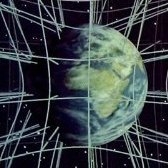Leaderboard
Popular Content
Showing content with the highest reputation on 03/31/25 in all areas
-
If you did a search I’m sure you’ll find efforts from the last several years.1 point
-
Yes, this is what I said in my post (I’m quoting my self): But my main point was rather that once a metric is established to be of type Levi-Civita, then all its characteristics are uniquely determined, so you can’t have two “different” connections that are both LC. What changes according to the metric are only the connection coefficients, not the connection itself. That’s an important difference. Yes, I get what you are trying to do. Unfortunately I don’t think you have grasped the concerns I have tried to level at this idea, perhaps because they got buried in technical arguments. So let me try a more practical approach. In the first instance, consider this simple scenario - let’s say you have a box that contains a quantity of muons (a bit contrived, I know, but bear with me). The box is locally in an inertial frame, and otherwise isolated from any external influences. There’s no spatial motion in the frame of the observer, the box just sits there and ages in time. I’d like to use your own earlier example of a metric here, where the 00-component is unity, and the notion of time is your own adapted “new time”, not SI seconds; I will be using the letter u for this, to distinguish it from ordinary time t. In this spacetime, the geometric length of the muons’ world lines between two events A and B then is \[s\prime =\int\limits_{B}^{A} ds=\int_{B}^{A} \sqrt{g_{\mu \nu}dx^{\mu}dx^{\nu}}=\int\limits_{B}^{A} \sqrt{g_{00}} du=\int\limits_{B}^{A} du=\bigtriangleup u+C\] so it is just simply the difference in u’s (we can choose C=0 for simplicity). Let’s say the two events are 1 second u-time (not t-time!) apart, and at u=A the box contains X muons. My question is: how many muons are left at u=B, ie after 1 second u-time? All I’m after is a percentage of the original number of particles X, so nothing to do with any units. I’m interested to see how you go about solving this - which, in ordinary physics, would be an almost trivially simple problem. Like so: \ [ Latex code \ ] just without the space between backslash and angle bracket.1 point
-
1 point
-
This was funny (from The Hill, today): The temperature was minus 3 degrees Fahrenheit when the U.S. officials landed at Pituffik, and Vance expressed surprise at the chill when joining U.S. Space Force Guardians for lunch. “It’s cold as s‑‑‑ here. Nobody told me,” he said. ------------------------------------------------------------ I mean, there you are, around 77° N, on the north end of Greenland, and you're not expecting it to be pretty cold?1 point
-
I use it in the formal sense as defined in differential geometry, ie as a structure that allows you to meaningfully define the inner product of tangent vectors at points on the manifold, which in turn gives a meaningful notion of lengths, angles, areas and volumes. Yes. You need to be careful here - the Christoffel symbols and the connection are not the same thing. A connection allows you to relate tangent spaces at different points on the manifold to one another, ie it provides a notion of parallel transport. This is quite independent of any metric, which is to say you can meaningfully have a manifold that is endowed with a connection, but not a metric. The Christoffel symbols then give you the connection coefficients, ie they tell you what effects your connection has in a particular coordinate basis. They do this by describing what happens to basis vectors as you transport them between neighbouring points, which is something you can calculate from the metric and its derivatives. Without a metric you can still do parallel transport, but you can’t tell what happens to lengths and angles when you do it. Long story short - you can have a connection without a metric. See above. Having a different metric changes the Christoffel symbols (they are not tensors!), but not the connection. Ok, but in the context of physics (SR/GR) the term “metric” is most often used in the differential geometry sense. Physically speaking, equivalence then means a diffeomorphism, so that both metrics describe the same spacetime and thus physical situation. But here’s the thing - as explained above, you’re still on the same manifold endowed with the Levi-Civita connection. By changing the metric like this, you’re doing one of two things: 1. You’re describing a different spacetime, ie a different physical situation, since the two metrics aren’t related by any valid diffeomorphism; or 2. You’re describing the same physical situation, but the coordinates you are using no longer have the same physical meaning. I think what you are trying to do is (2). But the thing is that now measurements on your mathematical manifold (ie in the model) no longer correspond to measurements in the real world, so anything you calculate from this - eg the length of a world line - must first be mapped back into suitable physical coordinates to compare them to real-world measurements. Such a mathematical map may or may not exist, depending on the specifics of the setup. This will also change the form of physical laws, so all the various equations etc will be different for each choice of transformation you make. In either case, this creates a lot of additional work and confusion, for no discernible benefit. It would look for differences in the outcomes of experiments if you vary direction of relative motion, as mentioned previously. For example, if a uranium atom decays if you move it in one direction, but doesn’t decay if you move it at a 90° angle to that direction (everything else remains the same), then you have anisotropic space. This has nothing to do with conventions.1 point
-
https://en.m.wikipedia.org/wiki/Delayed-choice_quantum_eraser Then go to: The experiment of Kim et al. (1999) I did not though it would be the problem I didn't thought it would be the problem? So easy to Google it. A little bit more than that, to be honest, and modest. Quite strong correlation, and some facts that have been overlooked. What can be already conclude based on mentioned above, you could debate.-1 points
-
Not really. I do not ask anyone to give me their time. If you do not know or understand this experiment then it is not for you. So maybe hurdles are here so I do not have to waste my time on someone who do not know what he is talking about. Someone like you. Who have no idea what he is talking about. If you for example can not comprehend that idler and signal side are only different by name. And what that actually means. Or you do not understand that those are observations based on data provided by experiment on question. You do not even attempt to ask good question. Quite broad question. I will give it a go. So maybe let's start with things we can agree on move one by one and see where we land. Would you agree? Signal and idler sides aren’t special—one’s as good as the other for interference. Meaning if interference is possible and it is because it is happening on signal side it is also possible for idler side.-1 points
-
I think you are mistakenly assuming that I am after convincing you or anyone. I personally find no value whatsoever in that. I would find grate value in someone who disagrees with me and driven purely by dislike to me, decides to do that experiment, in a way where he will have to publish results. Just to prove me wrong. Why ? Because I am certain what result he would see. I do not really want to discuss this with someone who have not done deep dive already, and do not understand this experimental setup well.-1 points
-
You're not really getting the reality, of which I hmm'd over; anyone can dress up as a tramp... If that's the fashion 😣 Bing Videos-1 points
-
Is is not evidence that interference at BSc is happening, driving suggested passing through only aberration, from both sides. Yet it is evidence that such interference and such aberration can not be excluded. I will reiterate. I am not after convincing anyone to anything. I am not interested with you trying to convince me and arguing. Your question clearly shows that you have not even try to understand what I am suggesting or asserting. You just want to disagree. I am only interested in conversation with someone who understands this experimental setup, took time to read carefully and understand my first post. And have genuine questions. So If you consider that against the rules go ahead and lock this thread.-2 points







